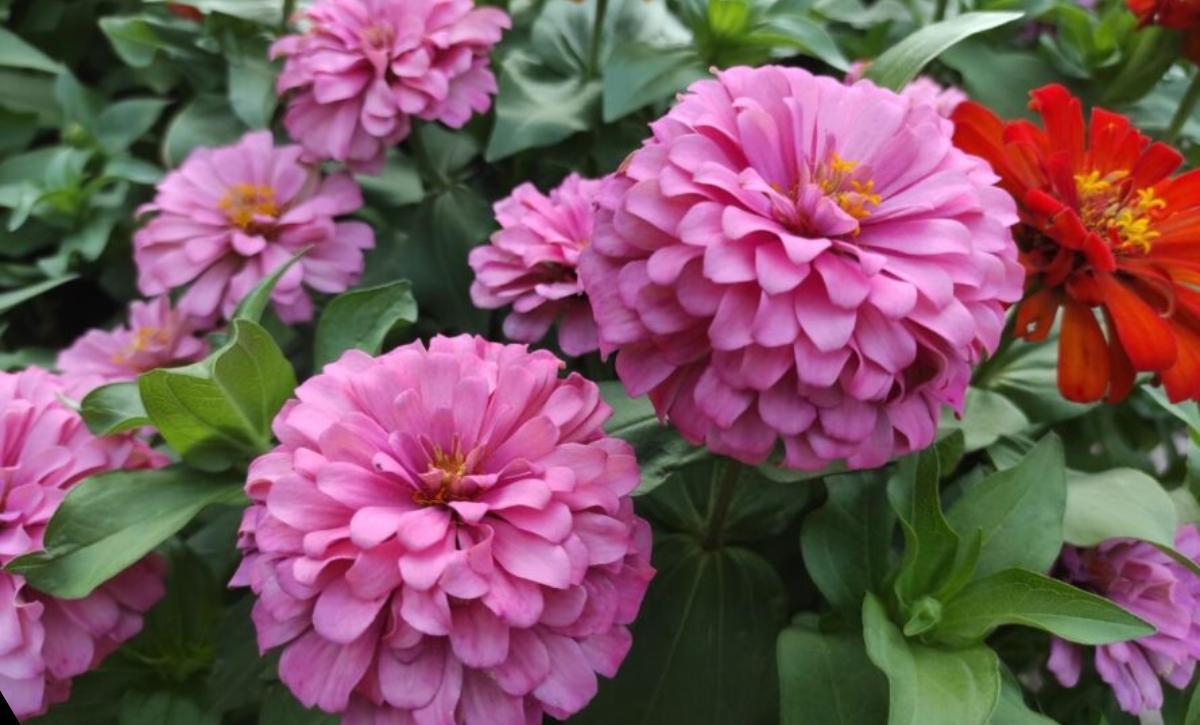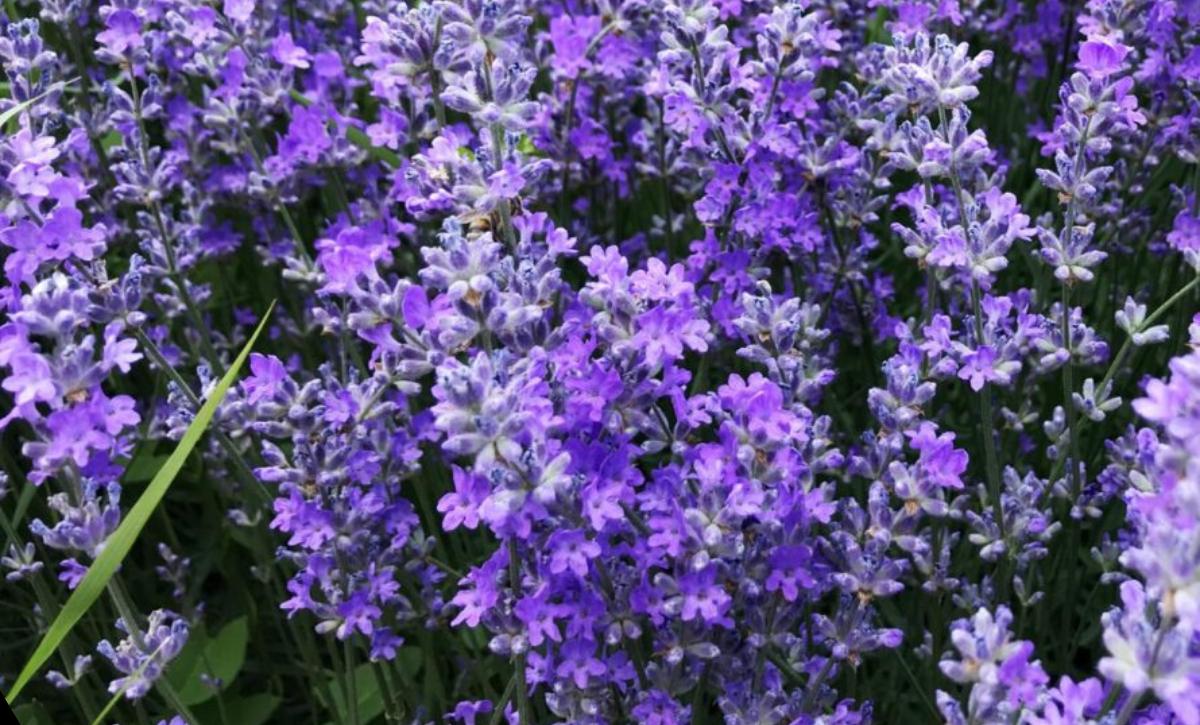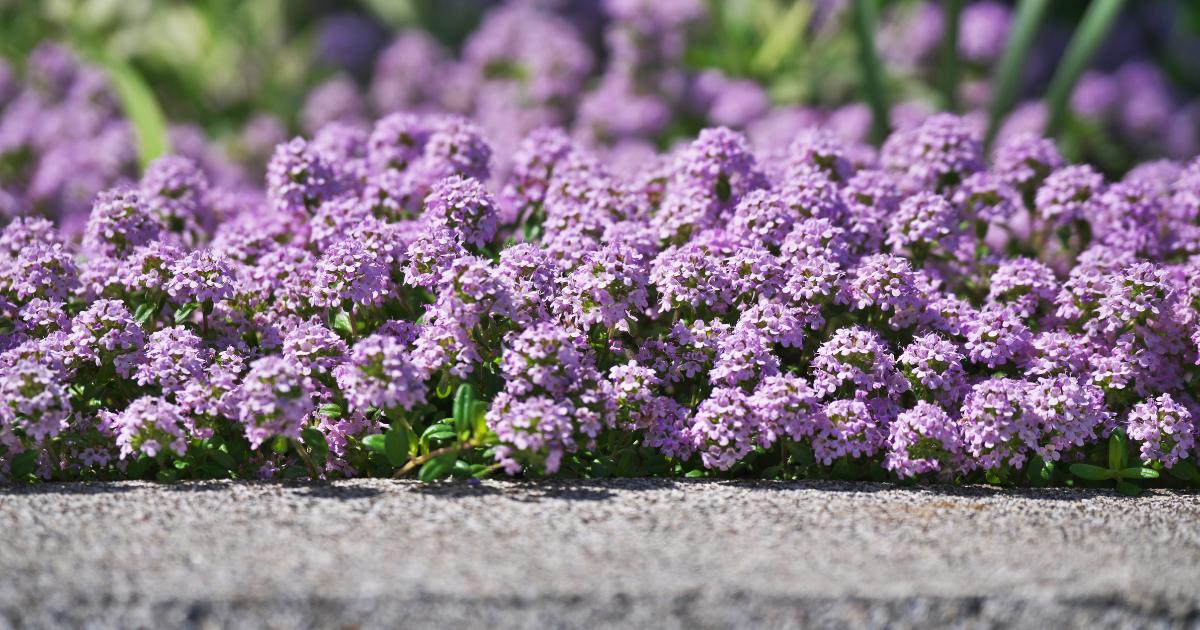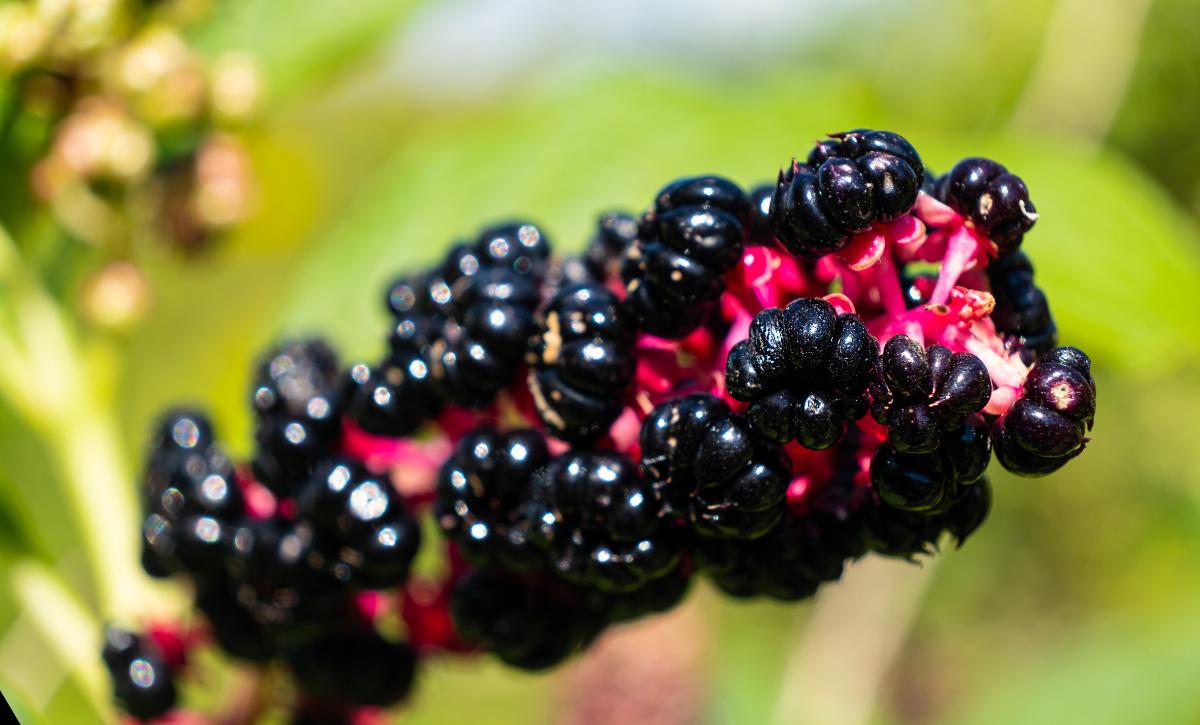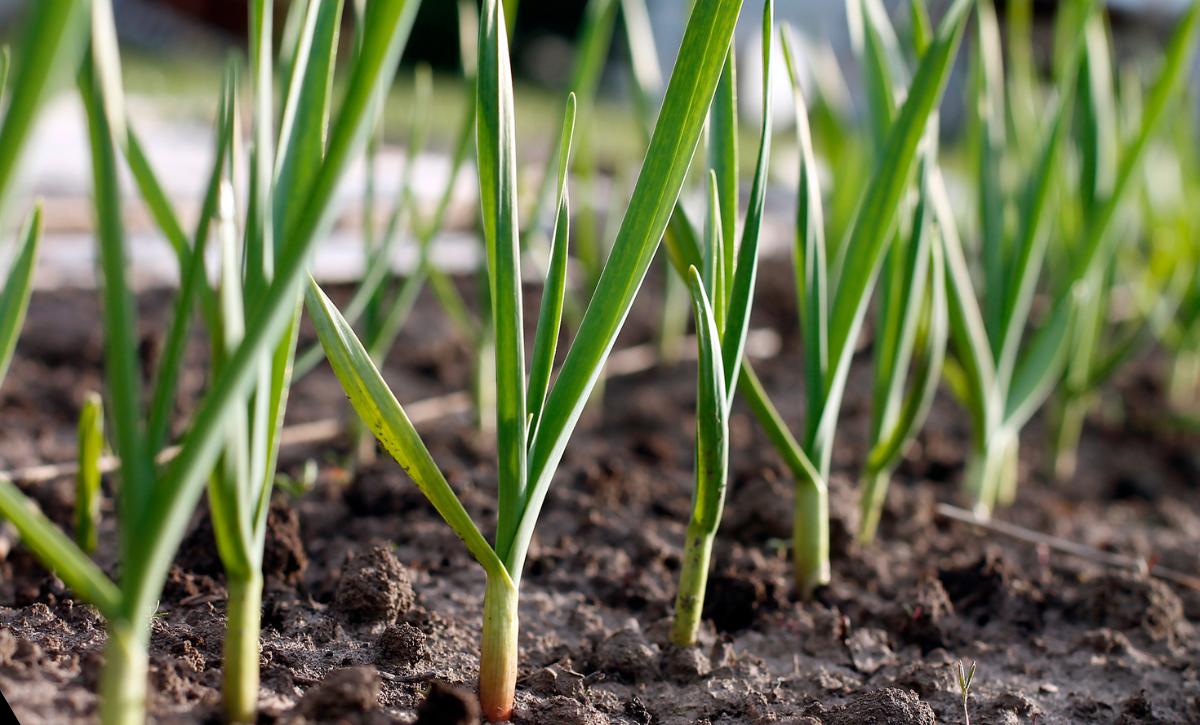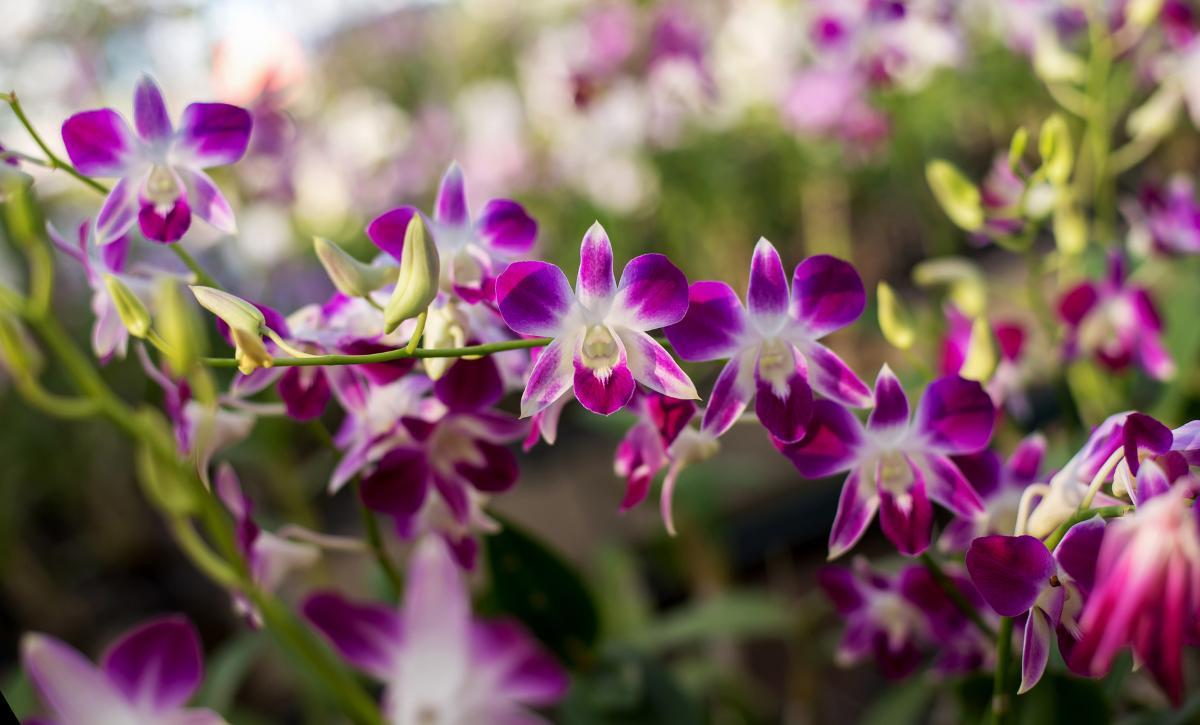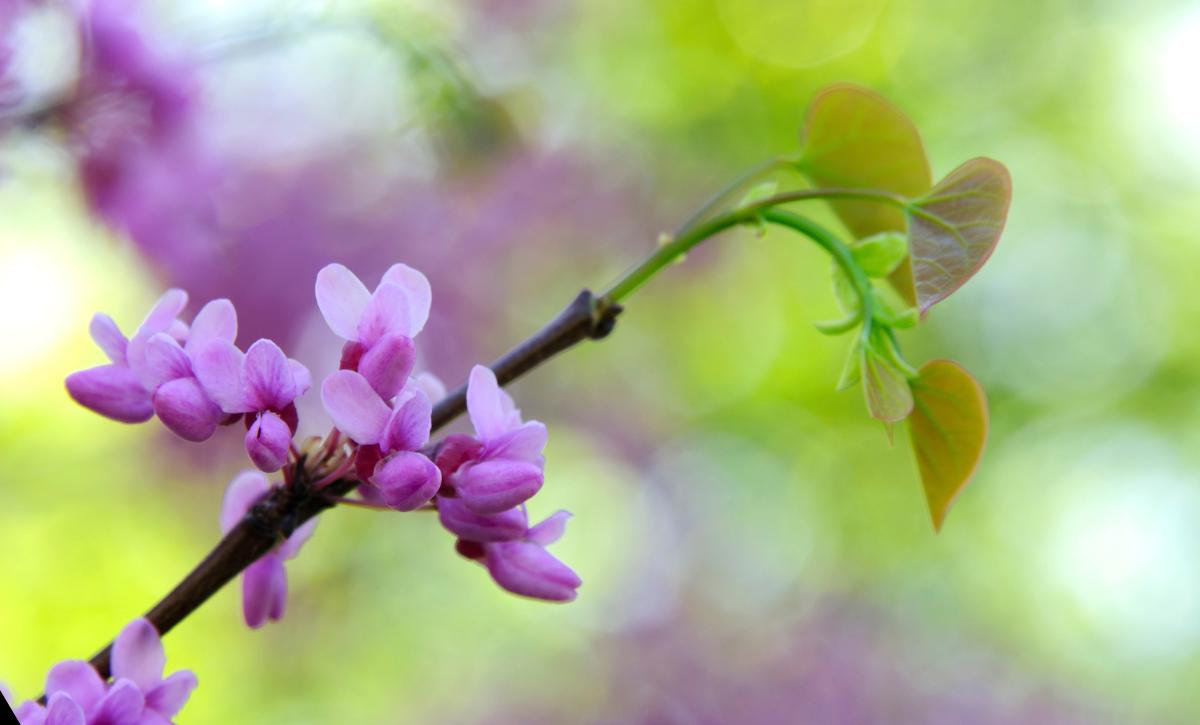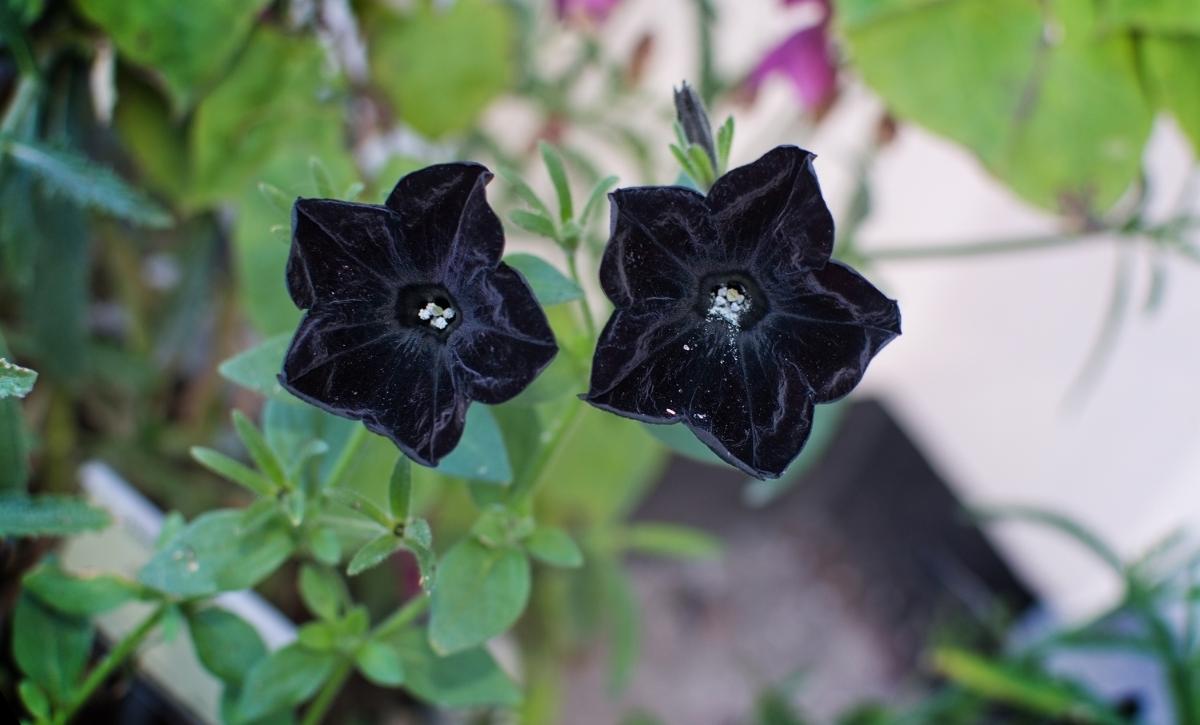When gardening, you want your plants to be healthy and have a high yield. Companion planting is one of the oldest methods used to achieve these results. This refers to growing different herbs, veggies, and fruits close to each other, bringing additional benefits to the garden.
Plants such as Nasturtium have proven to be effective in attracting pollinators while at the same time deterring pests, making them a great companion plant in many gardens.
In this article, we’ll focus on chamomile as a companion plant. Chamomile is famed as a healthy tea option with a great taste. But did you know that chamomile makes a great companion plant?
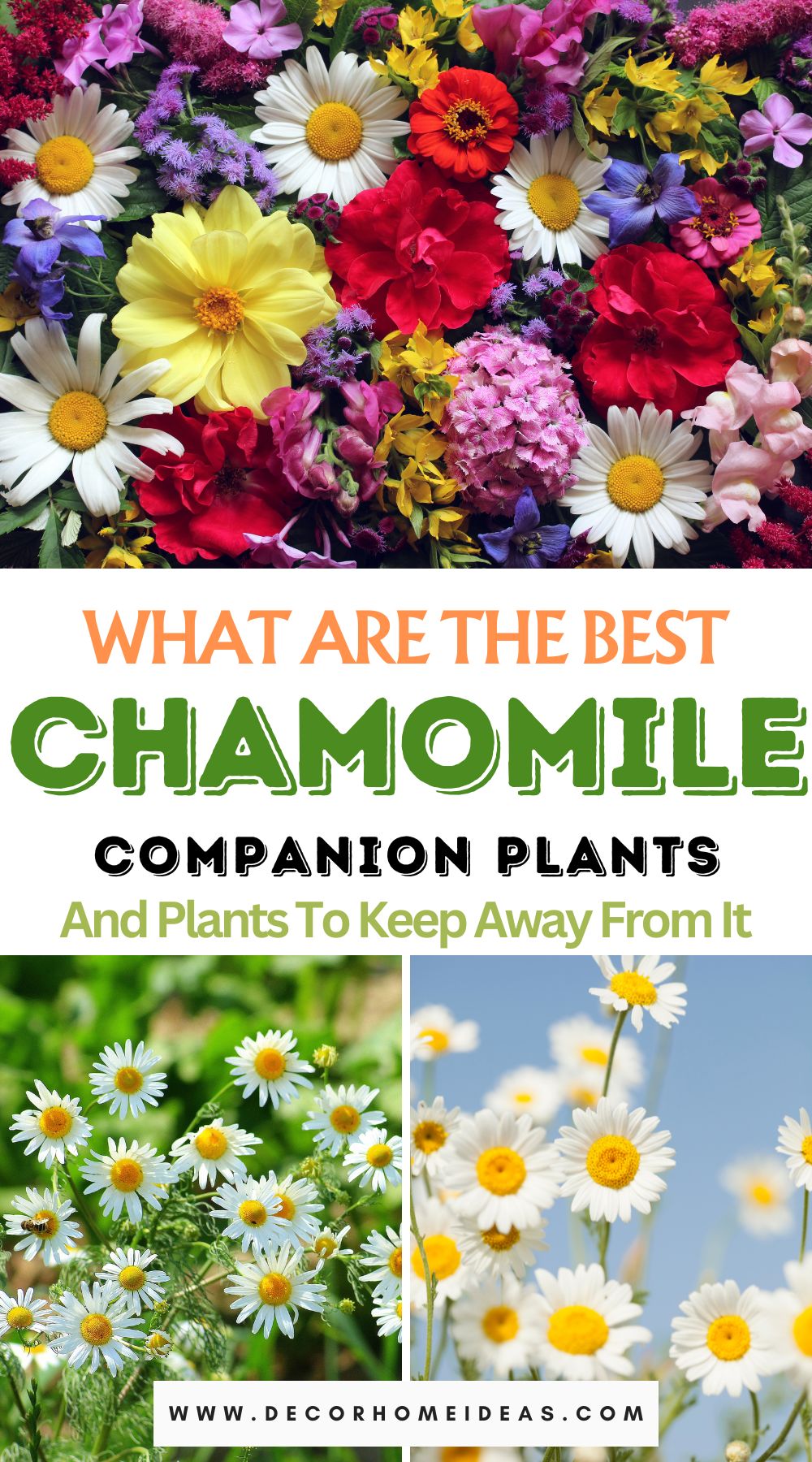
Best Chamomile companion plants are: Brassicas, cucumbers, tomatoes, fruit trees, mint, beans, squash and basil.
Let’s discuss chamomile companion plants and the benefits of companion planting.
Benefits of Chamomile Companion Plants
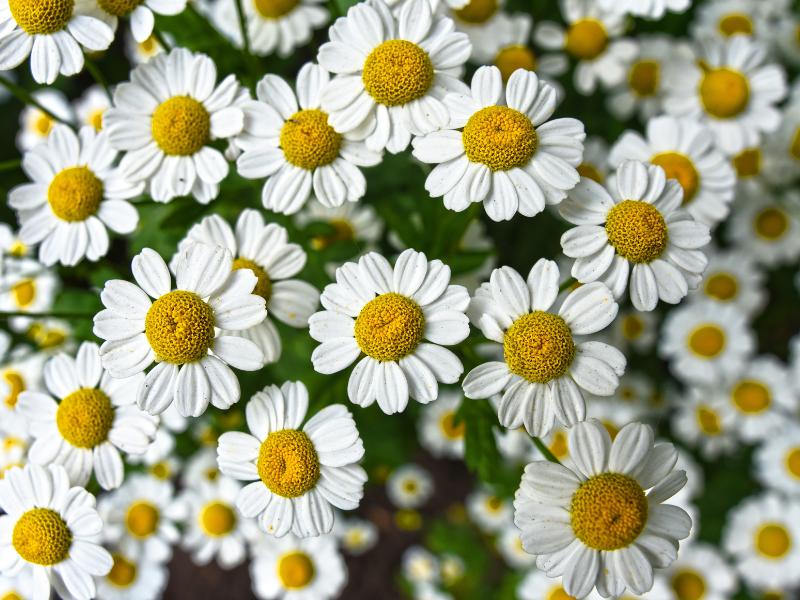
Growing companion plants comes with different benefits. The basics of companion planting state that plants should at least have the following benefits:
- Deter pests and insects – Some insects, such as cabbage moths, cucumber beetles, cabbage worms, and carrot flies, can be highly destructive to your vegetable garden. It gets worse if it’s an infestation-level attack. Since some pests are relatively invisible, like aphids, detecting the infestation may be too late. However, some plants can deter pests from infesting your garden, acting as a natural pest control.
- Attracting beneficial insects – insects are instrumental in aiding pollination in your plants. The more the number of pollinated flowers, the higher the yields. Having pollinators like ladybugs and bees can assist you in this regard, especially if the pollinator population is low.
- Improving growth and taste – one of the ways that companion plants like chamomile and marjoram improve other plants in the garden is by releasing savory substances into the soil. This encourages better growth and enhances the taste of their fruits.
- Enriching soil nutrients – generally, plants absorb nutrients from the soil, but in some cases, plants may release nutrients to the soil. For example, beans are known to be good nitrogen-fixating plants. Fixation works by directing nitrogen to the soil, which other plants can use to develop lush foliage.
- Creating shade – some plants like zucchini and asparagus don’t do well in direct sunlight, and growing companion plants is one way to shade them from the scorching sun.
- Ground covers – another way companion plants can improve the garden is by acting as ground covers. This lowers the water evaporation rate from the soil and keeps it cool.
Is Chamomile a Good Companion Plant?
Chamomile, also known as the Matricaria chamomilla, is a fragrant flowering herb from the Chamomilla genus and the Asteraceae family. The plant is mainly grown for its medicinal and herbal properties. Its beautiful flowers will also give your garden some decorative features.
Of course, chamomile isn’t grown for its decorative features but for its ability to be a good companion plant.
The unique fragrances of the plant make it a significant attraction for beneficial insects such as ladybugs, hoverflies, wasps, and bees. If you want to improve your harvest, then you should look to attract these insects.
Chamomile is an even better companion plant because it can also repel destructive insects such as aphids and spider mites that attack your plant and potentially impact the harvest or the garden entirely—protecting other plants and the gardener.
Other unique properties of chamomile include its antibacterial and antifungal properties. Common plant infections such as blight, mold, and powdery mildew are caused by fungus. By growing chamomile, you can prevent such diseases. Using chamomile tea to water young plants is also an excellent way to avoid damping off.
If the above reasons aren’t convincing enough, chamomile also releases specific chemicals in the soil that will improve the flavor of other crops. Of course, the soothing and delicious chamomile tea will top it all off!
Types of Chamomile
Chamomile is one of the plants with a high number of subspecies, having over 25 types of chamomile. In fact, you can exclusively make a garden out of this plant’s different subspecies.
However, the two common types of chamomile are German chamomile (Matricaria chamomilla) and Roman chamomile (Anthemis nobilis).
German chamomile is a tall variety of chamomile that grows to about 3 feet tall. It’s unsuitable as a ground cover but a beautiful shrub, especially when the tiny white flowers bloom. The German chamomile has a very strong scent, and many people consider it to be the wild type.
Roman chamomile is a hardy, low-growing plant that can survive in different climates. Since it’s a low grower, it makes a good ground cover compared to the German type. It’s fast-growing and is sometimes considered an invasive weed.
These two types are hardy and can survive in partial shade or full sun.
Chamomile Companion Plants
Now that we have examined the benefits of companion plants and how chamomiles may help your garden. Let’s look at the plants that you should grow around chamomiles.
When growing your garden, consider planting the following plants next to chamomiles.
Brassicas
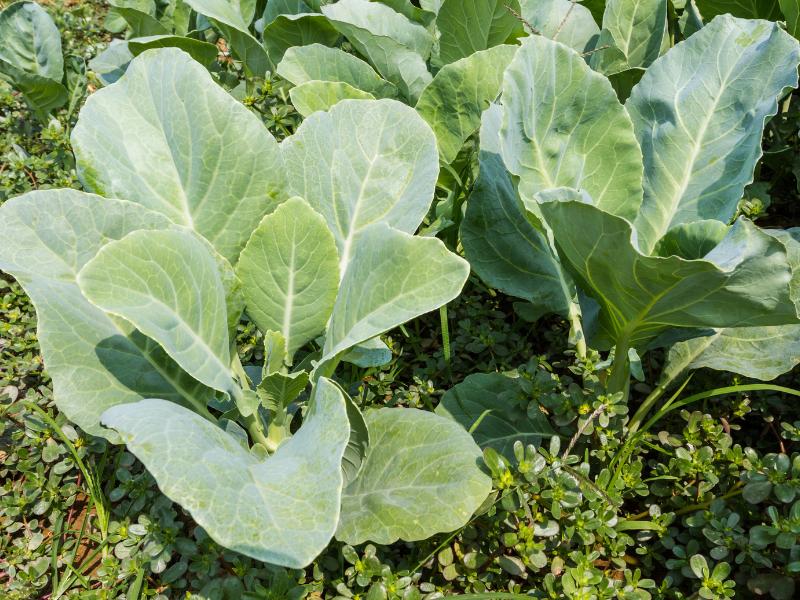
Chamomiles can be very helpful to brassicas when they are grown close together; not only do they add a touch of color, but they also come with a host of other benefits.
Brassica vegetables include brussels sprouts, broccoli, cauliflower, cabbage, kohlrabi, kale, turnips, radishes, etc.
Since brassicas are prone to various diseases and pests, many people avoid growing them. Growing them next to chamomiles will help solve most of the issues that brassicas may face. However, you’ll need to take good care of the plants to promote their growth.
Pests such as cabbage worms are fond of brassicas, which attack the enormous green leaves and deprive the plant of all critical nutrients needed for its growth and development.
Since chamomiles are a bit taller than brassicas, they’ll also shield your vegetables from the sun. This helps the plant thrive since brassicas adore shady areas. You can try pairing the brassicas with other plants, such as yarrow, which also makes a great companion plant for them.
Cucumbers
This is one of the common vegetables that makes an essential ingredient for salads, sandwiches, and cucumber water.
One of the most common pests that attack cucumbers is cucumber beetles. These insects attack the plant’s vascular system and carry around bacteria that attack the system and make the plant wilt. These beetles can quickly move from one plant to another, spreading the bacterium.
Cucumber beetles are difficult to stop because they usually work slowly and undercover, so when you discover the problem, your plants can’t be saved.
Growing chamomile next to your cucumbers is one way of protecting your plants from these stealth attacks.
The distinctive fragrances in chamomiles deter cucumber beetles from attacking your plants. Additionally, chamomiles can improve the taste and flavor of your cucumber fruits (yes, they’re fruits!)
Tomatoes
Tomatoes can significantly benefit when grown next to chamomiles because they can repel all the insects and pests that could attack the tomato plant.
Tomatoes are pretty hardy compared to cucumbers and don’t have unique growing or care requirements. All you need is some fertile well, drained soil with a pH of 5.8 and 7. Since these plants thrive in high temperatures and enjoy full sun, they do not need much shading.
Fruit Trees
Chamomile’s antifungal and antibacterial properties make it a practical companion for fruit trees. These trees are prone to attacks from fungi such as Leucostoma, Valsa, and Cytospora.
Chamomiles will pair well with peach and apple trees, but you can also try growing them with other fruit trees since they won’t harm them. In some cases, companion plants may positively impact others while harming others.
This is brought about by different factors, such as competition for nutrients or the plants’ conflicting needs. For example, growing two plants that need potassium will only lead to the plants competing for nutrients. This makes both plants weak and slows their growth.
Mint
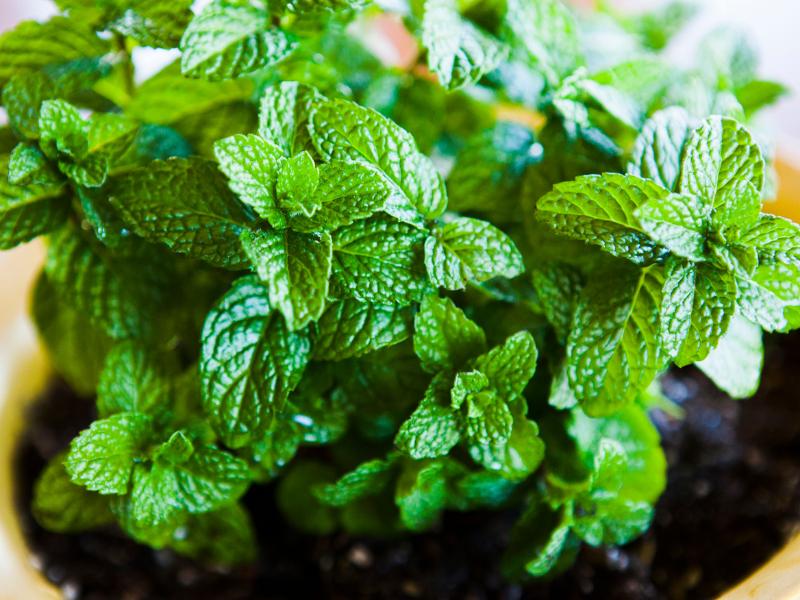
Growing chamomile and mint is a bit of a gray area. It’s argued that Chamomile can impact the ability of mint to produce essential oils, which gives the plant its minty scent.
Since both mint and chamomile are used as companion plants, this effect can make mint ineffective in deterring pests and other insects.
However, this shouldn’t be an issue if you are growing your mint for its flavor because chamomile makes your plant even mintier.
Beans
Beans are rich in vitamins A, C, and K and potassium, iron, and magnesium minerals. Since they’re easy to grow from seeds, beans are one of the healthiest veggies in your garden.
Legumes such as beans are known for their nitrogen-fixation properties and are also rich in nutrients. Since nitrogen levels in the air are higher than in the soil, beans help increase the nutrient level by absorbing it from the air and fixating it in the soil through the roots.
Because of this property, beans are typically grown in containers with other vegetables to improve their growth and development.
So, how does chamomile fit in?
Even though beans are easy to grow and help other plants around them, you can still improve their flavor and boost their growth rate. Since chamomile repels pests and insects, they’ll protect your nutritious legumes from harm.
Squash
Squash would be one of the easiest plants to grow were it not for its susceptibility to pest infestation, especially squash beetles.
Squash beetles operate similarly to cucumber beetles. These attacks can reach infestation levels and cause widespread damage. Since the beetles can stay undetected for a long time, they can cause significant damage.
Growing squash next to chamomile deters squash beetles due to its prominent scent. Pests won’t even be able to detect your squash when it’s next to squash.
Basil
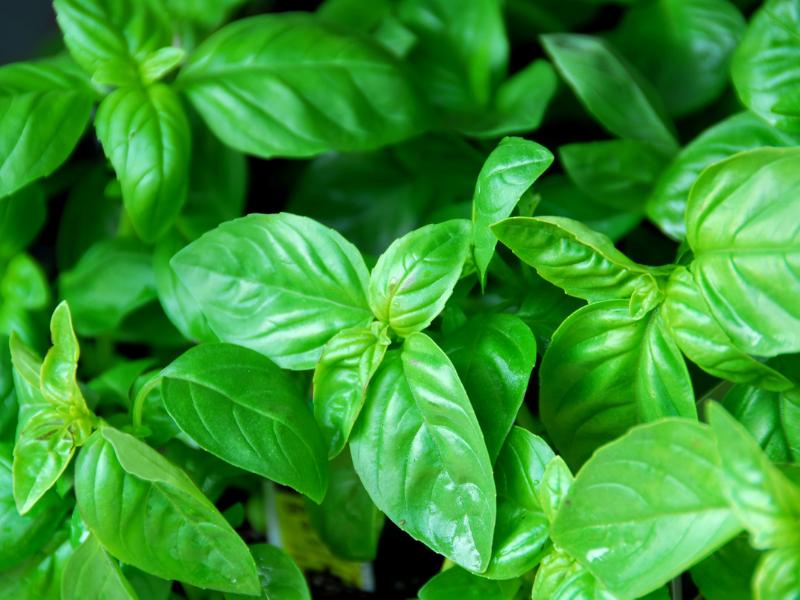
Basil is a unique, flavorful herb used as a spice. Its unique flavor and scent make it a garnishing herb with several uses.
This plant thrives in direct sunlight, which helps the plant grow more robust and resist diseases. For your plant to produce the best results, you must ensure it’s grown in well-draining and fertile soil. You can add some mulch or compost to the soil to improve the nutrient level.
Adding mulch replenishes the soil nutrients and helps with water retention. This is good for the plant as it needs frequent watering to survive and may wilt or die from underwatering.
Chamomile can improve and add a unique flavor to your basil. By planting chamomile nearby, you can encourage the plant to increase essential oil production, making it more flavorful. You can also use it to extract basil oil, which is excellent for the skin.
Other Veggies and Plants
There are so many plants that can benefit from growing chamomile nearby. The plants mentioned above are just some of the most common ones, but the list is far more extensive than that. Here are some other plants that you can pair with chamomile:
- Alliums
- Marigolds
- Chives
- Celery
- Coriander
- Bee balm (flowering plant)
- Bleeding heart (flowering plant)
- Shrubs and trees like dogwood, roses and lilacs
What Not to Plant with Chamomile
As we previously stated, companion plants can sometimes cause damage to some plants even though they benefit others. However, this isn’t the case with chamomile, as it neither harms other plants nor does it harm them.
However, there is the mint situation. While the theory hasn’t been irrefutably proven, it’s worth looking out for. I, for one, have not had issues when I have paired these plants.
It would be best to watch out for parsley, carrots, fennel, and parsnips, as they can attract some pests that could harm your chamomile plants.
How to Grow Chamomile
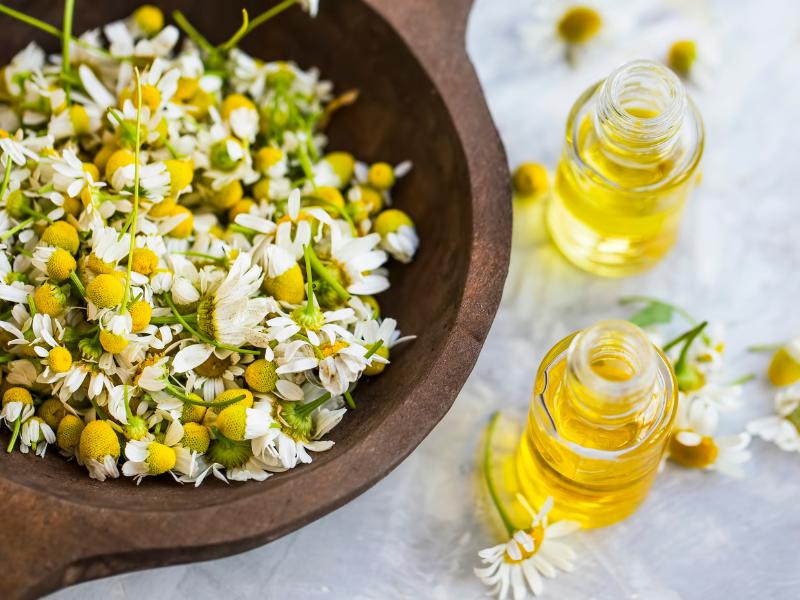
Chamomile should be at the top of your list when choosing herbs for your garden. If your space limits you, consider growing chamomile in pots.
The good thing about herbs is that they can be grown in hanging baskets, small pots, grow bags, or even containers. If you have ample space, you can grow the herbs in raised garden beds or set up the garden on recycled items or milk crates.
Even for people with limited spaces, such as small apartments, you can grow the herbs on a windowsill where they’ll receive sufficient sunlight. While they won’t take up much space, they will freshen up your space.
Here is how you can plant and take care of your chamomile plants.
How to Plant Chamomile
There are two ways of planting chamomile: starting them from seeds or seedlings. Roman chamomile is the variety you can grow from seeds, while other types you need to grow from seedlings.
These plants need to be grown in fertile and well-draining soils. So, the first step is preparing a suitable substrate to grow your chamomiles. If your soil requires nutrients, you can fertilize it before growing the plants; alternatively, you can purchase nutrient-rich soil.
When growing the plants from seeds, dig a shallow hole in the ground and sow the seeds. Sowing should be done in later spring when the temperatures are warm enough to encourage quick germination. Starting your seedlings indoors with warmer temperatures is advisable for people in colder regions.
Another method you can use is growing the plants from seedlings. Here, you’ll need to place the seedlings where they can receive plenty of sunlight, about 6 to 8 hours of direct sunlight daily. If finding an optimal location is difficult, you can invest in some grow lights.
Chamomile Plant Care Guide
This plant is adaptable and can survive in various conditions, especially wild-type ones. However, chamomiles need frequent watering, especially when you grow them in pots.
Place the plants on pot feet during winter to avoid destruction from excessive moisture.
During the summer, the plant will need frequent watering due to the hot temperatures that increase the water evaporation rate. Shield the plants during hot days to minimize the chances of the soil drying out.
Chamomiles will also need pruning; otherwise, they’ll get bushy and leggy. Clip the plants regularly during the growing season.
You should pick the flowers during the summer rather than at the end of the growing season. This will encourage the development of new flowers. Chamomile flowers are the main ingredient in making chamomile tea; they can also be cooked or used for garnishing!
You can also store harvested flowers for future use. First, you’ll need to dry them by spreading them in a tray and keeping them in a warm, dry place. However, don’t expose the flowers to direct sunlight. Once the flowers are dry, store them in an airtight container in a cool, dark spot.
Frequently Asked Questions
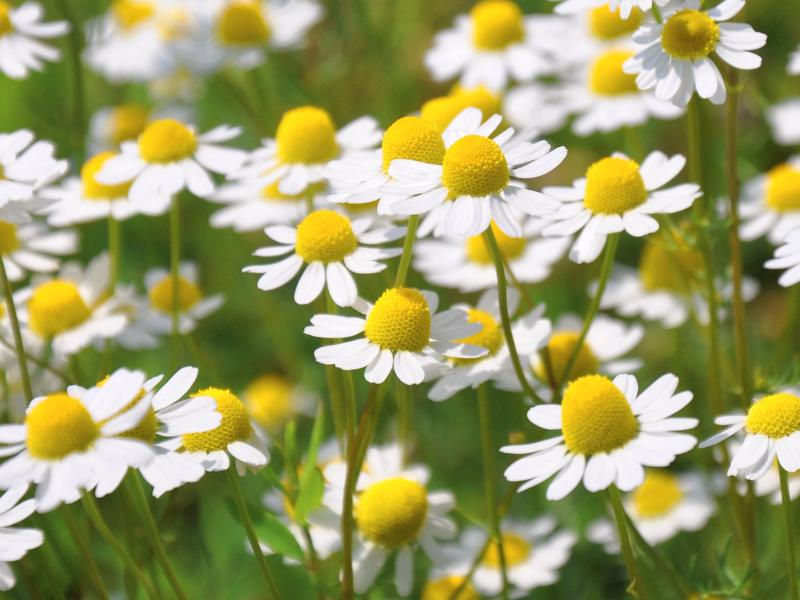
What is the difference between Roman chamomile and German chamomile?
Both chamomiles generally have the exact care requirements, but their growth habits vary. Roman chamomile is considered a ground cover since it’s a low-growing plant; in some cases, gardeners even regard it as invasive.
German chamomile, on the other hand, grows to be about 3 feet tall. As such, it cannot be grown as ground cover and is rather grown as a shrub. Its tiny white flowers make it very decorative.
The two varieties also have a slight difference in terms of fragrance. Roman chamomile has a light, crisp, apple-like aroma, whereas German chamomile has a sweet straw smell.
What is the purpose of companion plants?
Companion plants are crucial in improving nearby plants’ health, growth, and development while protecting them from invasive pests and insects. They also enhance the flavor of the plants.
Some companion plants even improve the nutrient content of the soil and contribute to its fertility. This especially applies to companion plants like legumes that can increase the nitrogen content in the soil.
Most importantly, companion plants can improve the yield of nearby plants by attracting pollinators such as ladybugs, hoverflies, and bees.
What does chamomile pair well with?
Chamomile is one of the best companion plants.
It pairs with cucumbers, brassica veggies, squash, basil, tomatoes, beans, fruit trees, and flowering plants like Bleeding hearts and Bee balm. While some gardeners suggest that you shouldn’t pair it with mint, I have had positive results in pairing the two plants.
Avoid plants such as carrots, parsnips, fennels, and parsley. This is because these plants may attract pests that could attack the chamomile.
What are the benefits of planting chamomile?
Besides making some delicious chamomile tea, growing this plant has many other benefits.
For one, chamomile will attract pollinators in your garden, such as bees, wasps, and ladybugs, improving your yield. At the same time, the plant will repel destructive insects such as aphids, cabbage moths, and mosquitos.
Chamomile also improves the soil’s nutrition and releases some compounds that will enhance the flavor of other foods.
The antibacterial and antifungal properties of the plant are vital in preventing nearby plants from developing fungal infections such as mold, blight, powdery mildew, and others. Its lovely white flowers are also a plus for any garden.
Summing Up
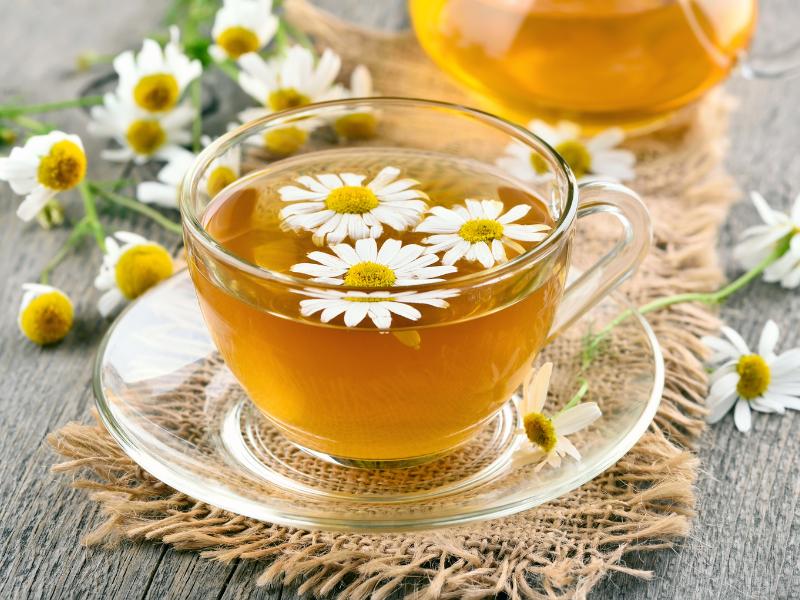
Chamomile plants have different benefits as companion plants in a vegetable garden.
These not only deter pests and diseases but they also contribute to they also facilitate pollination and fertilization in plants by attracting pollinators and may cause your plants to be tastier.
Besides making tea, you can also use chamomile flowers in cooking, not to mention that they’ll add a touch of liveliness to your garden with their bright colors.
What’s more to like about this plant is that it doesn’t need specialized care, only sufficient light and water to thrive.

